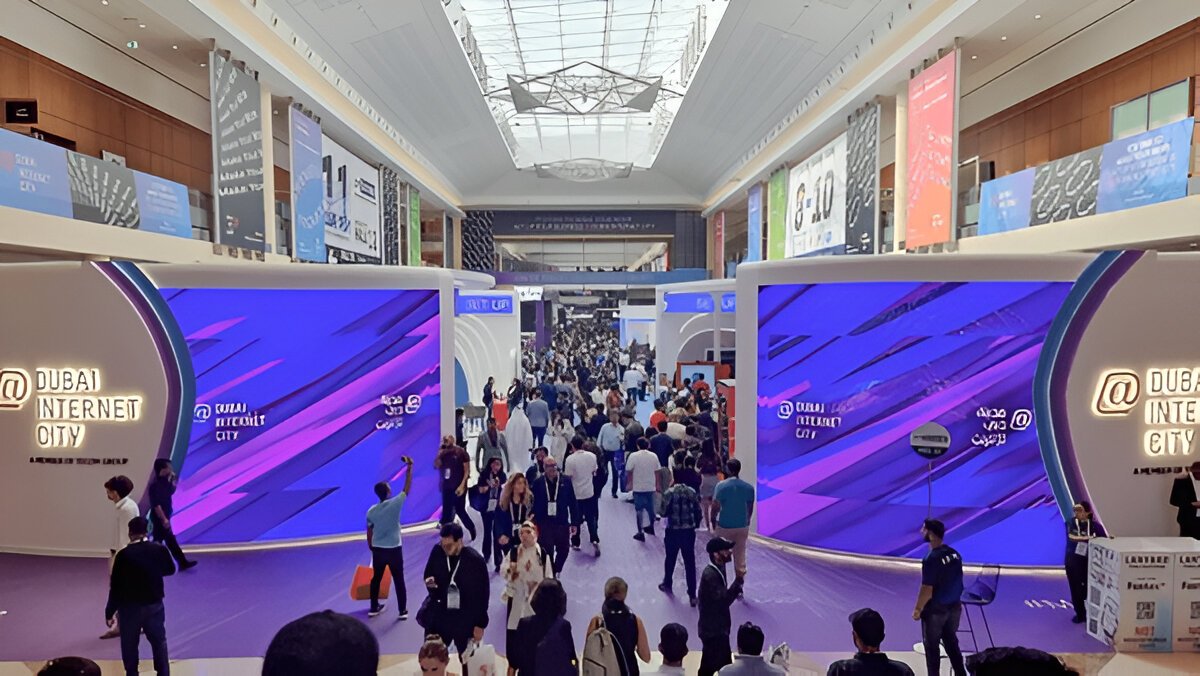Designing a booth is not just about showing your brand — it’s about starting real conversations and building lasting relationships. Whether you’re preparing for a trade show, exhibition, or virtual event, the goal is the same: create a space where people feel welcome, curious, and eager to engage. This guide will show you step-by-step how to build a stand that not only looks great but also drives real interaction.
Know Your Audience and Set Clear Goals
Before you begin designing your stand, understand who will visit it. Are they buyers, partners, or general visitors? What are they looking for?
Once you know your audience, define your goals. Do you want to collect leads, educate people, or build brand awareness? A clear purpose will help shape your booth design, content, and staff training. When goals and design match, visitors feel your space is relevant and worth their time.
Use Human-Centered Design
Your booth should feel open and inviting. Avoid walls or barriers at the entrance. Use clear signage that shows who you are and what you offer. Create spaces that let people walk in comfortably and explore freely.
Add elements that make people want to stay:
- Lounge seating or comfortable stools
- Warm lighting with natural tones
- Phone charging stations
- Free water or coffee station
Tell a Clear Brand Story
A strong story makes your stand memorable. Use large images, short messages, and product displays to tell who you are and why you matter.
Stick to your brand colors and logo across your booth. Repeating your style builds recognition. Add real stories, like how your product helped a customer. People connect more when they see real examples.
Use screens or videos to share short stories. Animation or motion catches the eye and helps people understand complex ideas faster.
Add Interactive and Multisensory Elements
People remember things they do, not just what they see. Add touchscreens, product demos, or games. Let visitors explore your products with their hands or through digital tools.
Gamify your booth. For example, run a quiz with small prizes or a leaderboard. Fun activities bring people in and spark conversation.
Consider:
- Background music that fits your brand
- A mild scent diffuser to create a sensory signature
- Textured materials that are inviting to touch
Use Technology to Build Connection
Use tools that help people talk to your team. This can be live video calls, chatbots, or tablets with meeting forms. If someone has a question, they should get help fast.
For hybrid or virtual stands, let people book meetings, join webinars, or download materials. Add live chats or Q&A sessions. These make your booth feel alive and responsive.
Encourage social media sharing:
- Create a unique hashtag
- Offer a selfie wall or branded photo area
- Give small rewards for tagging your booth
Design for Virtual Booths Too
A virtual stand should still feel like your brand. Use strong visuals and simple navigation. Make it easy for visitors to watch videos, ask questions, or find documents.
Add live elements like webinars, demos, or staff Q&A. People want to connect with humans, not just read static content.
Keep your virtual booth updated. If you run multiple events, adjust your content to match the audience. Remove old materials and add fresh stories or products.
Prepare Your Team for Real Conversations
Your staff makes the biggest difference. Train them to ask good questions, listen, and explain things clearly. They should know your products well but also know how to start friendly chats.
Tips to prepare your team:
- Practice common questions through role play
- Encourage open body language and eye contact
- Give cheat sheets or product cards for quick answers
- Assign team members to specific zones of the booth
Have enough people to cover busy times. Rotate shifts so no one looks tired. For virtual events, make sure someone is always ready to answer chat messages or take a video call.
Most of all, choose staff who are warm, curious, and good listeners. A kind smile and helpful attitude can do more than fancy lights or bold banners.
Track What Works and Improve
After the event, review your results. How many people visited? How long did they stay? What did they ask about? Use this data to plan better next time.
Send a short survey to visitors. Ask what they liked and what you could improve. Use their feedback to fine-tune your message, layout, or team approach.
If someone showed interest in a product, follow up with more information. A quick thank-you email can turn a short booth visit into a strong business lead.
FAQs About Design a Stand That Drives Conversation & Connection
How do I attract people to my booth?
Use open layouts, bold visuals, interactive elements like games, and a friendly team who initiates conversations.
What tech tools can I use in a virtual booth?
Live chat, video demos, downloadable resources, AR/VR tours, and meeting schedulers.
How do I train my booth staff?
Provide product knowledge, role-play conversations, and teach them to listen actively and engage warmly.
What’s the best booth size or layout?
It depends on your goals. Even a small booth can be effective if it’s well-designed with clear messaging and useful experiences.
How do I measure success after the event?
Look at leads generated, time spent at your booth, number of demos held, and attendee feedback.
Final Thoughts
A good booth doesn’t just look good — it makes people feel good. It invites curiosity, starts meaningful conversations, and leaves a lasting impression. Use smart planning, clean design, the right tools, and a helpful team to build a space that people remember and talk about. If you focus on the needs of your visitors, the results will follow.







